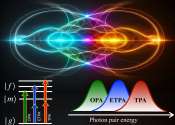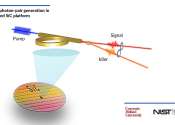Using DNA origami, researchers create diamond lattice for future semiconductors of visible light
The shimmering of butterfly wings in bright colors does not emerge from pigments. Rather, photonic crystals are responsible for the play of colors. Their periodic nanostructure allows light at certain wavelengths to pass ...




